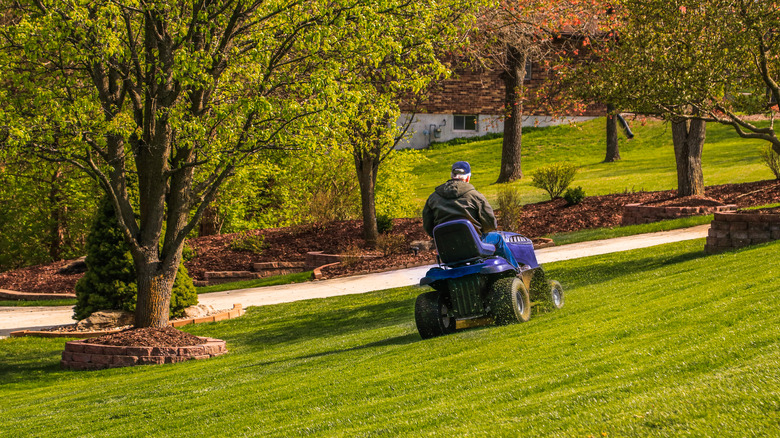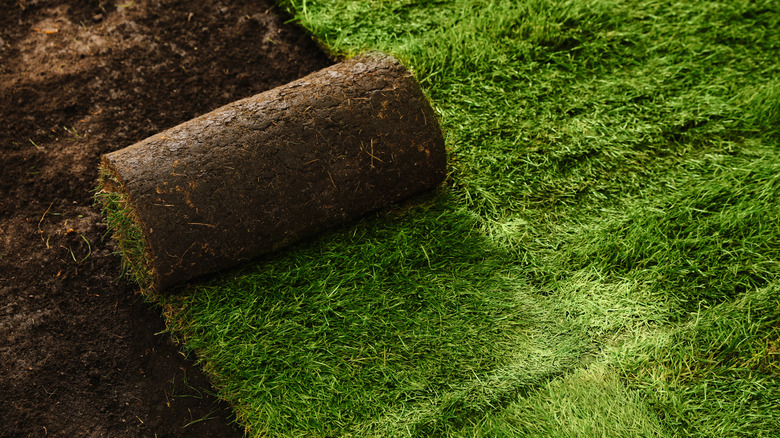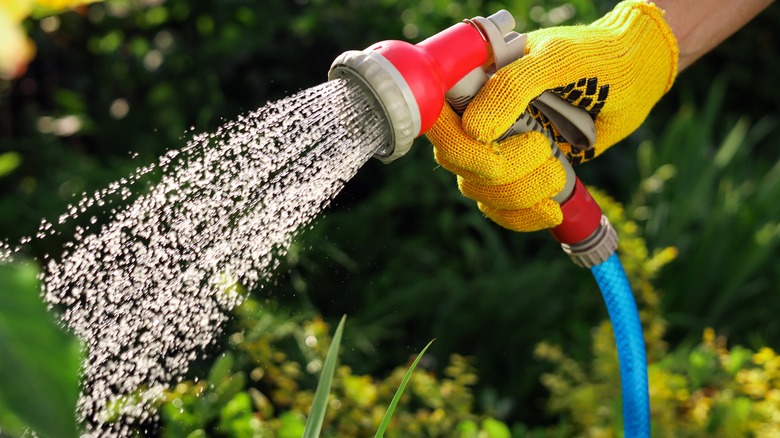Everything To Know About Planting Grass On A Slope
There's nothing better than sitting on top of a grassy hilltop and enjoying a cool breeze. You may have memories of rolling down a hillside as a kid or enjoying a picnic on a lawn that overlooked a beautiful view. A grassy hill can be enjoyed in so many ways, and you may be considering how to create the lush landscaping in your own yard that you've been dreaming of. However, it may seem daunting to try to plant grass on a slope when you have questions about soil erosion or a maintenance plan. Creating a grassy hillside can be done successfully by considering several factors, including measuring the steepness of the slope, preparing the soil, choosing the type of grass to be planted, and creating a plan to preserve the new growth.
The first factor to consider is how steep the slope is. You can determine the grade of your yard by measuring how far it rises in height every 5 feet. For example, a slope that rises 1 foot in height for every 5 feet of distance is considered to have a 20% grade. This is the point where a stretch of land is considered to be a steep slope, and several techniques can be useful when planting grass.
Preparation
Once you've determined the slope of your yard is steep enough that it'll require additional steps to plant grass successfully, it's time to prepare the soil. One option is to use a rototiller to break up the top few inches of soil, which will get it ready for planting. It's also helpful to rake the soil to smooth it out, which provides the opportunity to get rid of any items such as rocks or sticks.
At this point, you can choose from several different options to plant the new grass. For example, deep-rooted grass, such as creeping red fescue or buffalo grass, is intended for growth on hillsides. You can protect the seeds with coverings such as straw, burlap, or cheesecloth by securing them to the ground with stakes. However, a hydroseeding sprayer may be a better option for a steep slope. It includes mulch and fertilizer with the seed, as well as a bonding product that'll help the seeds stay in place.
Other good choices are using seed blankets or laying sod. A seed blanket is made of seed and fertilizer with a protective cover included. It can help discourage weeds and it's also biodegradable, so all it needs to thrive is to be secured with landscape staples and then watered. Laying sod is also an effective method to plant grass on a hillside, especially since it may take root sooner than planting seeds.
Maintenance
After your grass is planted, it's time to follow up with a maintenance plan so that the roots of the new growth will become established on the slope. Once the grass has taken root, it'll actually help to prevent future soil erosion. Begin by watering the grass two to three times a day. Each time you do, don't overwater; five to 10 minutes is sufficient. After the seed has sprouted, change the watering schedule to once a day but for longer, about five or so minutes more. Keep in mind that too much water may run the risk of washing the seeds away or disrupting the germination process. Once the grass is 2 inches high, a regular watering schedule of once or twice a week is sufficient.
When mowing grass on a slope, be sure to set your mower on the highest setting to avoid scalping your new grass. It's also important to consider that a yard with a grade of 15% or more is too steep to use a riding lawn mower. Using a push mower is a much better option in this situation. Even though it may take longer to complete the task, it's important to stay safe and not lose control of the machinery.


